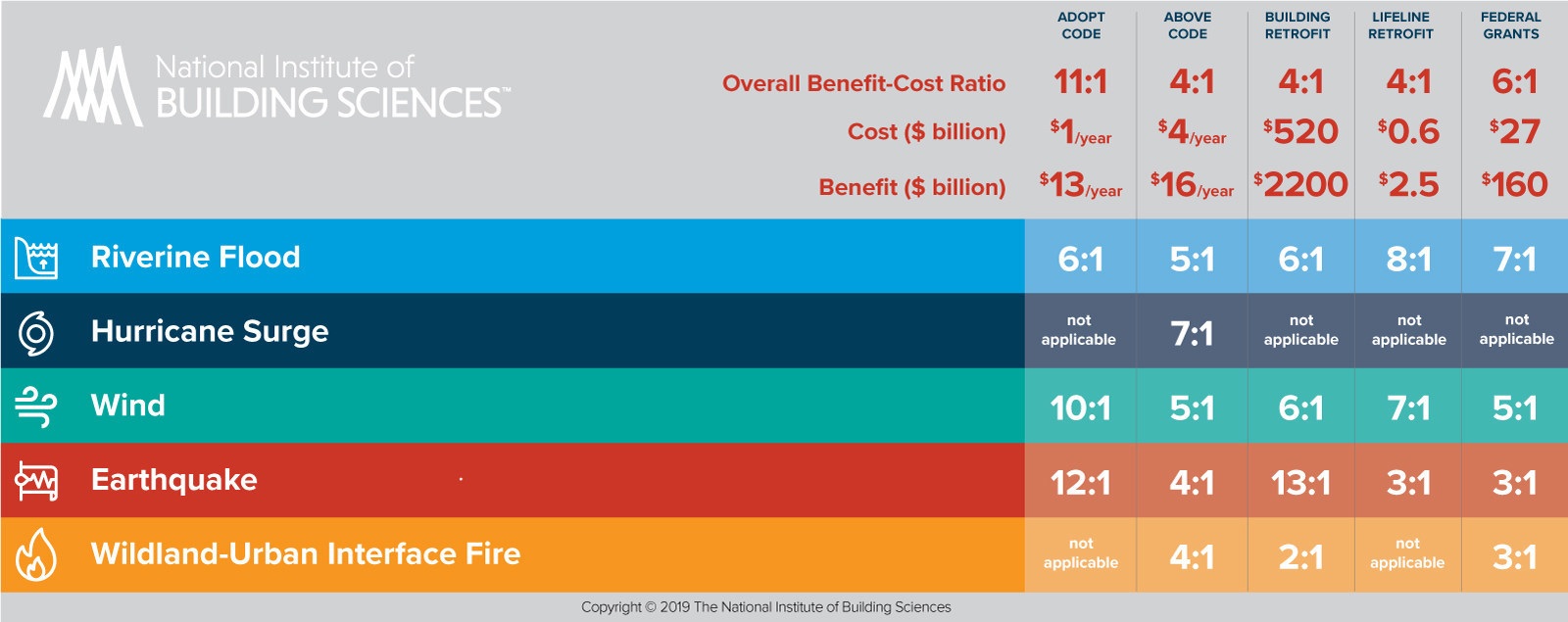NEWS PROVIDED BY
National Institute of Building Sciences
Article originally posted on PR Newswire
WASHINGTON, April 20, 2020 /PRNewswire/ -- When it comes to reducing the impact of natural disasters, mitigation improves safety, prevents property loss, and keeps disruption to a minimum, says a report by the National Institute of Building Sciences.
"While COVID-19 presents our nation with unprecedented challenges, natural disasters are continuing," says Lakisha A. Woods, CAE, President and CEO of NIBS. "Millions of Americans are exposed to these disasters. Mitigation is a crucial step to keeping our homes, businesses, and communities safe."

The nation recently has faced a number of dangerous phenomena, including tornadoes in the south and earthquakes in Idaho and Utah.
The Natural Hazards Mitigation Saves 2019 Report represents the most comprehensive benefit-cost analysis of natural hazard mitigation, from adopting up-to-date building codes and exceeding codes to the upgrade of utility and transportation infrastructure.
A webinar to outline report specifics with the Mitigation Saves team now is in planning. Interested parties should check back on the NIBS website for webinar details.
New to this year's report is the extensive coverage – more than 100 pages – addressing the strengthening of existing buildings to prepare for hazards like floods, high winds, fires, and earthquakes. This was funded by the U.S. Department of Housing and Urban Development.
According to NIBS research, 127 million people are exposed to hurricanes, 85 million to earthquakes, 42 million to floods, and 59 million to fire.
NIBS councils and partners are looking at next steps to increase the nation's mitigation investment by leveraging public assistance with private sector investments.
The NIBS Multi-Hazard Mitigation Council calls for a COVID-19 stimulus package to help recover the nation's economy and prepare cities and communities for long-term disaster resilience and stability.
"Our work is far from over," Woods said. "There are many layers of mitigation. The property owner and communities that have begun to protect against disasters must continue, and those that have not must start."
The Atlantic Hurricane Season begins June 1.
The National Oceanic and Atmospheric Administration predicts a stronger-than-normal hurricane season this year. These hurricanes undoubtedly will cause mitigation spending shortcomings by both federal and local governments, making even more vulnerable a number of communities that can barely handle additional blows in the current environment.
Background
The National Institute of Building Sciences has studied mitigation for more than two decades.
In 2005, NIBS studied the value of mitigation. In 2016, the original report was revisited and expanded.
Specifically, Mitigation Saves looks closely at:
- Building code requirements. Model building codes serve as the baseline to protect our built environment, setting minimum safety requirements for buildings. Compared with past (1990s-era codes), modern codes improve building resilience to natural disasters and save $11 for every $1 invested.
- Federal grants. Federally funded grants to study mitigation have resulted in a national average benefit of $6 to every $1 invested in upfront mitigation costs. Every state in the nation is estimated to experience $10 million in benefits from federal grants to mitigate flood, wind, earthquake, or fire. The majority of states experience at least $1 billion in benefits.
- Retrofit. Updating utilities, transportation facilities, and existing buildings is a critical component of mitigation. Water, wastewater, electricity, rail, roads, highways, telecommunications, and existing building stock must be better positioned to resist future disasters.